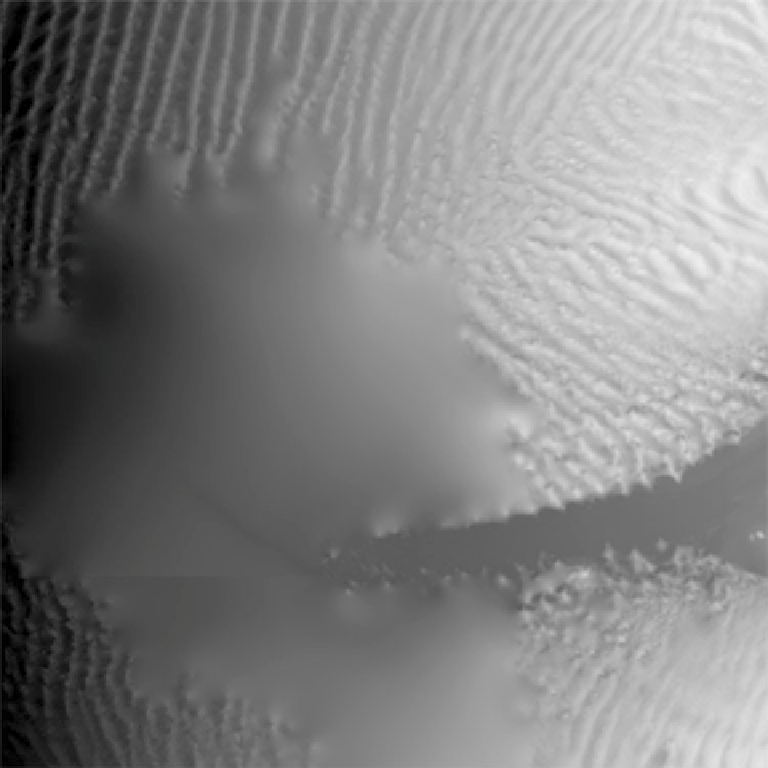Geoscience Reference
In-Depth Information
Fig. 18.26
Topography generated from SRTM data, showing part of
the Namib. The uniform-quality topography with 90 m spacing over
80 % of the land area of the Earth opened new vistas in geomorpho-
logical studies. This tiny example part of a scene is actually one of the
worst-quality parts of the whole product: the patch at the right where
data are missing is because the reflection from the deep sand was too
weak to permit the interferometric reconstruction of the surface height.
Neish et al. (2010) used this data as 'ground truth' to compare with
topography generated from radarclinometry on Titan. Compare this
topography with that generated by stereo optical imaging in Fig.
18.13
Kobrick 2000) used a radar with an additional receive antenna
at the end of a boom that was some 60 m long: the phase
difference between the echo received at the main antenna
onboard and this outboard antenna was used to generate a
precise topographic map of the Earth's surface between 60N
and 54S latitude, covering about 80 % of the Earth's land
area (this was limited by the Shuttle's orbit). This dataset,
with 16 m vertical accuracy and measurements at 30 m
spacing (though the generally-available data products have a
90 m spacing), is a powerful tool in the study of large dunes,
although some patches in sand seas are actually too radar-
dark for the technique to work correctly (see Fig.
18.26
). A
couple of papers point out the applicability of the DEM for
dune studies (e.g., Blumberg 2005; Potts et al. 2008) using
examples in the Namib and Taklimakan deserts.
One advantage of SAR in the study of dunes is that the
imagery is independent of solar illumination, and thus can
take place at night or through cloud. The presence of water
can strongly affect the appearance of a scene to radar,
however, so some care is needed if an image of a dry scene
is to be compared with one after rainfall.
SAR is of course an important technique on planets
where an optically thick atmosphere inhibits visual or near-
infrared observations—in particular Venus and Titan.

Search WWH ::

Custom Search